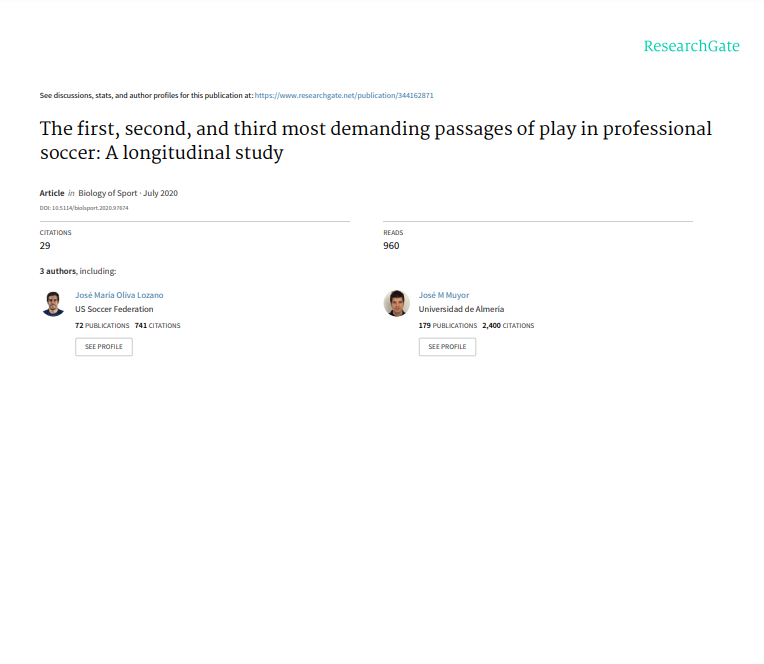AUTHORS: José M. Oliva-Lozano1
, Víctor Fortes2
, José M. Muyor1,3
1 Health Research Centre. University of Almería, Almería, Spain
2 Unión Deportiva Almería, Almería, Spain
3 Laboratory of Kinesiology, Biomechanics and Ergonomics (KIBIOMER Lab), Research Central Services. University
of Almería
ABSTRACT: The study aimed to compare the physical demands required during the first, second, and third
most demanding passages (MDP) of play considering the effect of playing position, type of passage, and passage
duration. A longitudinal study for three mesocycles was conducted in a professional soccer team competing in
LaLiga123. Tracking systems collected total distance covered (DIS), high-speed running distance (HSRD), sprinting
distance (SPD), total of high-intensity accelerations (ACCHIGH), and total of high-intensity decelerations (DECHIGH).
The results confirmed that a significant effect of the type of passage (first, second or third MDP of play) on DIS
(F(1.24, 178.89) = 115.53; p = 0.01; ηp2
= 0.45), HSRD (F(1.35, 195.36) = 422.82; p = 0.01; ηp2
= 0.75), SPD
(F(1.43, 206.59) = 299.99; p = 0.01; ηp2
= 0.68), ACCHIGH (F(1.45, 209.38) = 268.59; p = 0.01; ηp2
= 0.65), and
DECHIGH (F(1.45, 209.38) = 324.88; p = 0.01; ηp2
= 0.69) was found. In addition, a significant interaction between
playing position, type and duration of the passage was observed in DIS (F(12.60, 453.47) = 1.98; p = 0.02;
ηp2
= 0.05) and ACCHIGH (F(13.99, 503.78) = 1.92; p = 0.03; ηp2
= 0.06). In conclusion, significant differences in
physical demands between the first, second, and third MDP of play were observed. However, there were some
cases (DIS and ACCHIGH) in which no significant differences were found between these passages. Therefore,
coaches should consider not only the magnitude of these peak intensity periods (e.g., distance covered per
minute) but also the number of passages that players may experience during match play.



Leave A Comment
You must be logged in to post a comment.